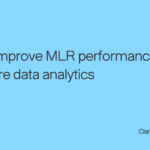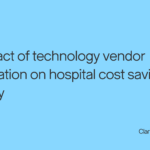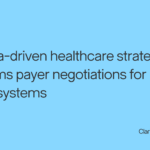Physician engagement is a crucial factor in the success and growth of healthcare organizations. Engaged physicians are not only more likely to deliver high-quality care to patients, but also play a pivotal role in driving operational efficiency and innovation. Using data analytics to support and educate physicians can streamline processes, provide meaningful feedback, and show the impact of engagement on patient health and satisfaction. In the past, measuring provider engagement could be challenging and subjective. Today, organizations can use data analytics to monitor, assess, and improve physician engagement. Supporting physician engagement is always challenging in the fast-moving and demanding healthcare environment, but the trauma and lingering effects of the COVID-19 pandemic have made it even more so. Healthcare professionals experienced the biggest drop in engagement among all employees between 2021 and 2022. This is troubling for many reasons, not least because disengagement can affect the quality of patient care. Engaged physicians are more likely to be attentive and present with their patients, which can contribute to a better overall patient experience, more trusting relationships, and improved compliance and outcomes. One study found that engaged physicians were more than one-fourth more productive than their less-engaged colleagues, which adds up to nearly a half-million dollars in additional patient revenue per doctor per year. In an increasingly competitive healthcare market, those numbers can make a huge difference in the services providers can offer and the talent they can attract. Provider organizations can leverage data analytics to evaluate engagement and improve it. Data analytics transform physician engagement strategies from empty jargon and catchphrases into meaningful insights that inspire physicians and help them find more fulfillment in their work. Areas to focus on include: More engaged doctors contribute to everything from patient health to a pleasant and productive workplace. As the practice and business of healthcare continue to face challenges, it’s more important than ever to prevent physicians from feeling disconnected and overwhelmed at work. Providers that use data analytics have a powerful tool at their fingertips to monitor and assess physician engagement and act before problems arise or become critical. Being proactive in this area can help providers support their clinicians and stay on track to reach their goals for patient care, growth, efficiency, and more.Physician engagement is important for growth
How data analytics can promote physician engagement
Physician engagement benefits everyone
- Author Details





